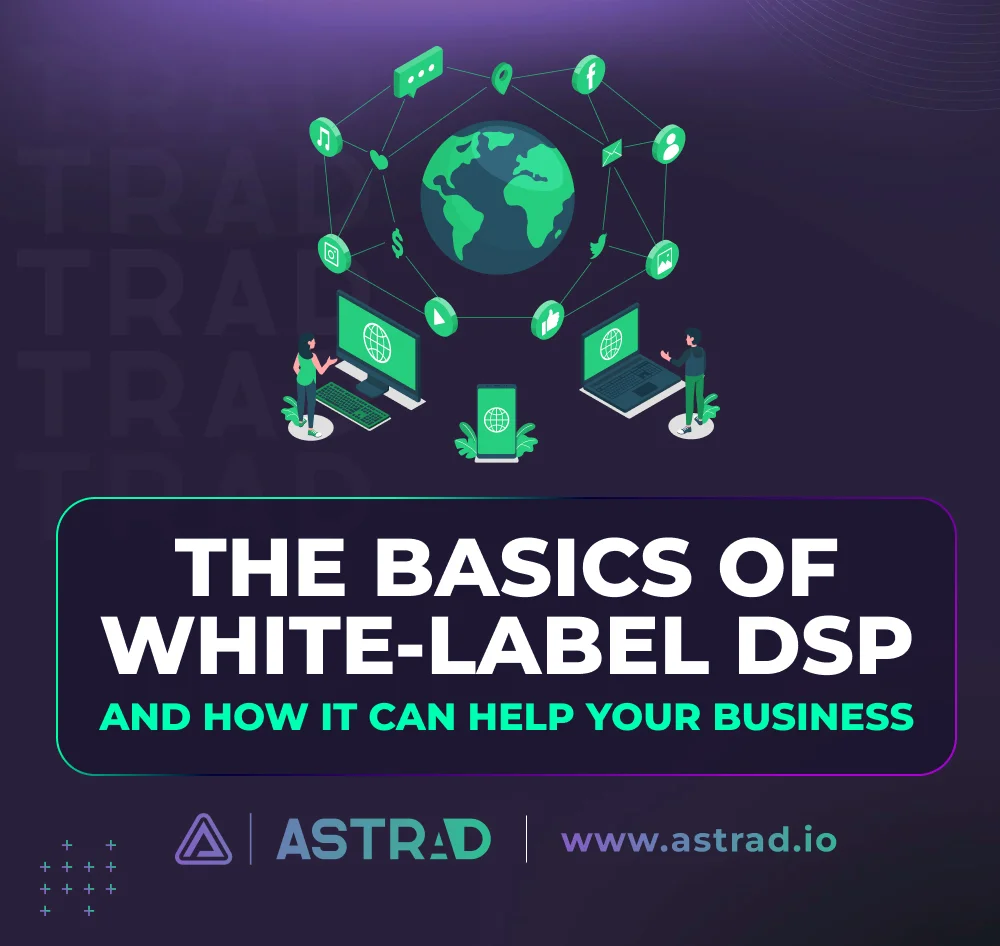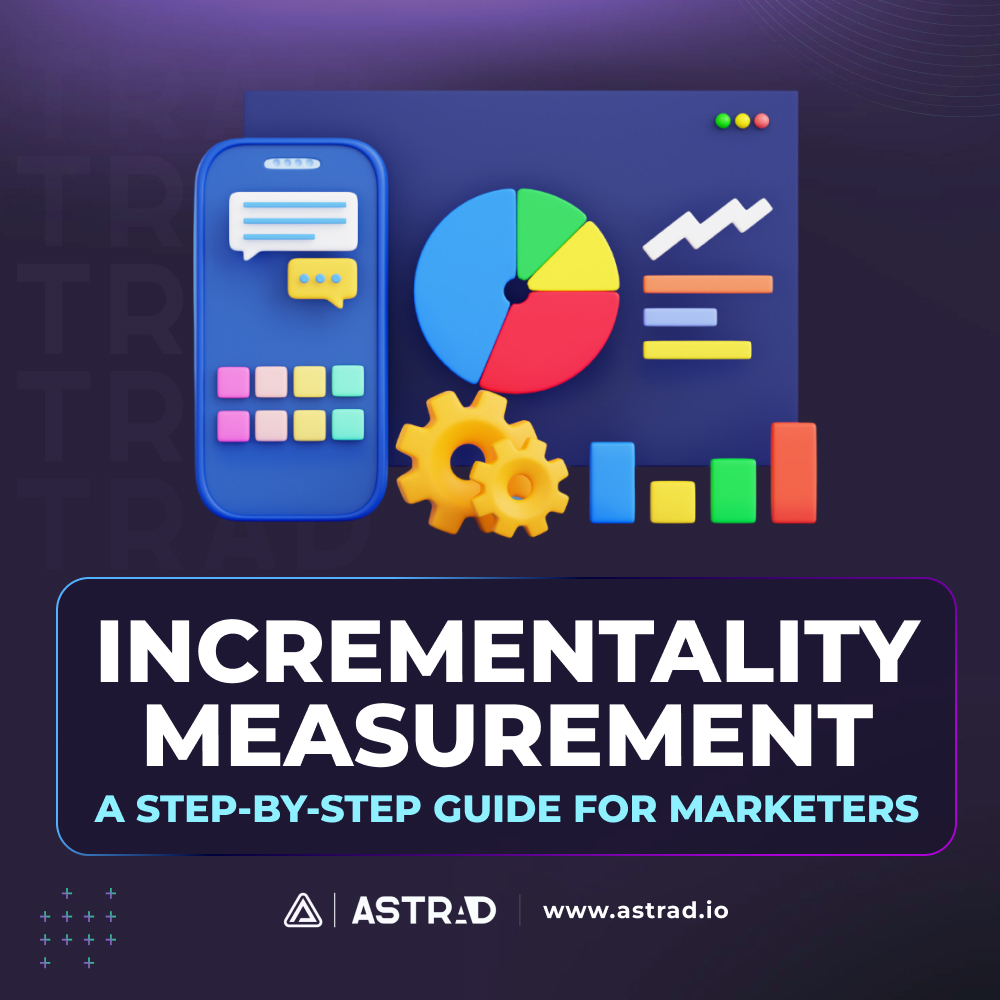White-label DSPs sound complex – one of those terms that is full of intrigue and over-complicated – but they’re your secret weapon for streamlined and branded ads. And, frankly, they’re not that hard to master. Imagine: total control over your campaigns, laser-focused targeting, and deep data insights – all at the tip of your fingertip and with your own platforms. Let’s dig into this new marketing power. The power of programmatic advertising with white-label DSPs.
What is Digital Advertising?
Digital advertising is the art of placing targeted ads online, encompassing everything from website banners to social media posts to mobile game placements. In short, publishers offer ad space, and Demand Side Platforms – DSPs – help advertisers bid on that space in real time.
DSPs act as your personal auctioneer, using algorithms to target specific audiences across multiple platforms, negotiate bids for maximum impact, and track campaign performance all under one user-friendly interface.
A white-label DSP is a Demand Side Platform – DSP – customized to operate under your own brand name and logo. It grants you complete control over the user interface and presentation, allowing you to offer programmatic advertising solutions directly to your clients or internal teams. It also offers branded solutions to clients, attracts new ones, and stands out from the competition with a unique selling proposition.
Google, Facebook, Spotify, and multiple other sites are typical examples of a DSP type of platform. The companies allow individuals to run ads on the medium/platform – under their unique brand, logo, and narrative.
White-Label DSPs vs. Traditional DSPs
- White-label DSPs are customizable advertising technology platforms that can be rebranded and resold by another company as their own product. This allows businesses to offer their own fully branded and customized DSP solution while leveraging the capabilities of the underlying technology provided by the white-label provider.
- Traditional DSPs are standalone software platforms that enable advertisers and agencies to purchase and manage digital ad inventory from multiple ad exchanges through a single interface. These platforms typically offer various targeting and optimization features to help advertisers reach their desired audiences across different online channels.
Here are the main differences:
Branding and Customization
- White-label DSPs can be fully reworked and customized to match the branding and requirements of the reselling company.
- Traditional DSPs are not designed for white labeling and lack branding and customization options.
Resale and Distribution
- White-label DSPs can be resold or distributed under the brand of another company.
- Traditional DSPs are used directly by the entity that purchases the platform and are not intended for resale.
Target Audience and Business Model
- White-label DSPs are used by companies seeking to enter the ad tech market or enhance their service offerings by providing branded advertising technology to their clients.
- Traditional DSPs are used by advertisers, agencies, and brands to directly execute and manage their digital ad campaigns.
Key Features of White-Label DSPs
White-label DSP platforms provide a range of features and benefits to efficiently manage and optimize digital advertising campaigns. Here is an overview of some of them:
- Campaign Management – Offer robust campaign management tools that allow users to create, launch, monitor, and adjust ad campaigns across multiple digital channels.
- Real-Time Bidding – RTB – Enable users to participate in programmatic ad auctions in real-time. This allows for the automated buying and selling of ad inventory across various ad exchanges, providing access to a broad range of digital advertising opportunities.
- Analytics – Offer comprehensive analytics tools that provide insights into campaign performance, audience engagement, and ad spending. Users can access real-time data, track key performance indicators, and generate custom reports to measure the effectiveness of their advertising efforts.
The Benefits of Using a White-Label DSP for Your Business
Using a white-label DSP platform offers numerous benefits for businesses looking to enter the digital advertising space. Let’s take a closer look at these advantages:
Customization and Branding
Allows businesses to customize and brand their advertising according to their specific needs, ensuring that the platform aligns with the company’s corporate identity and maintaining consistency in visual appeal, language, and overall user experience.
Cost Efficiency
Allows businesses to save on upfront development costs, as the core technology and infrastructure are already established. Additionally, businesses can avoid ongoing maintenance and upgrade expenses, as these responsibilities are typically handled by the white-label provider.
Quick Market Entry
Enable businesses to swiftly enter the digital advertising market without the need for extensive development and testing phases. The core features and functionalities of a DSP are readily available, allowing businesses to focus on customizing the platform to meet their specific requirements. This rapid deployment allows companies to seize opportunities and start generating revenue from their advertising platform in a shorter timeframe.
Scalability
Businesses can easily scale their platform to accommodate increased demand without the need for significant system upgrades or changes. This scalability ensures that the advertising platform can handle higher volumes of ad campaigns, users, or ad inventory while maintaining optimal performance.
Best Practices for Implementing a White-Label DSP
Here are some of the best white-label DSP practices to consider to ensure optimal results:
Strategic Planning
- Define Clear Objectives: Establish clear goals and objectives that align with your overall digital marketing strategy.
- Integrate with Existing Marketing Channels: Integrate white-label DSP platforms seamlessly with your existing marketing channels. This integration allows you to leverage data from various sources to create targeted and cohesive campaigns across multiple platforms.
- Leverage Data for Targeted Campaigns: Use the data available through your white-label DSP to create highly targeted and personalized campaigns. Analyze user behavior, demographics, and preferences to deliver ads that resonate with your target audience.
Customization Tips
- Brand Integration: Customize the platform to reflect your brand’s visual identity, language, and tone. Ensure that the user experience aligns with your brand guidelines so that advertisers and partners feel a sense of familiarity and consistency.
- Tailor Targeting and Optimization Features: Define custom targeting parameters that match your target audience and industry. Additionally, adapt optimization algorithms and bidding strategies to meet your campaign objectives.
- Adapt Reporting and Analytics to Key Metrics: Customize your reporting and analytics capabilities to focus on key metrics that matter to your business. Create custom dashboards that provide real-time insights into campaign performance, allowing you to make data-driven decisions and optimizations.
Monitoring and Optimization
- Set Up Real-Time Dashboards for Performance Tracking: Implement real-time dashboards to monitor campaign performance at any given time. These dashboards should display key metrics such as impressions, clicks, conversions, and costs.
- Implement A/B Testing for Continuous Improvement: Use A/B testing to experiment with different creatives, ad formats, messaging, and targeting options. This iterative approach helps you refine your campaigns over time, optimizing performance and driving better results.
- Leverage Machine Learning for Predictive Analytics: These advanced technologies can analyze large volumes of data, identify patterns, and make intelligent predictions. By leveraging machine learning, you can automate optimization strategies and improve campaign outcomes.
Redefined Game
White-label DSPs have redefined the game. Imagine, instead of relying on standard platforms, you offer branded programmatic solutions customized with your logo and interface, empowering you to truly own your clients’ experience. You’re using a platform that has already been put through the motions and rigors and has a huge output as well as a client base.
The benefits go beyond aesthetics: Gain complete control over campaigns, tailor targeting to laser precision, and unlock deep data insights, all on your terms. This translates to increased revenue potential, attracting new clients seeking personalized solutions and fostering higher client retention.
Don’t just compete; differentiate yourself with a unique selling proposition. In today’s dynamic market, agility and brand control are crucial. Embrace white-label DSPs as your strategic tool for digital marketing success and watch your brand soar in the ever-evolving advertising landscape.






